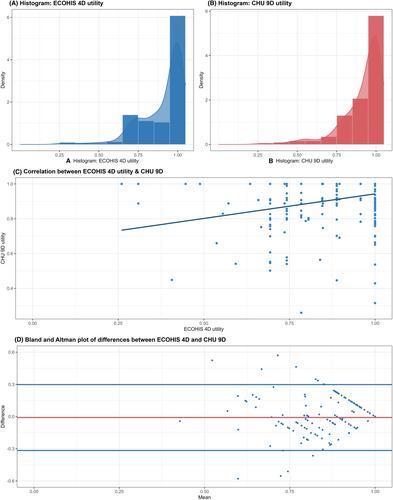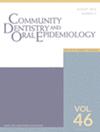Comparison of the Early Childhood Oral Health Impact Scale (ECOHIS-4D) and Child Health Utility Index (CHU-9D) in children with oral diseases
Abstract
Objective
Accurate assessment of child oral health is important for guiding economic evaluations and informing healthcare decision-making. Early Childhood Oral Health Impact Scale (ECOHIS-4D) is a preference-based instrument that measures the oral health-related quality of life of young children. The aim of this study was to compare the utility scores of ECOHIS-4D and Child Health Utility Index (CHU-9D), against an oral health indicator to evaluate which utility score corresponds better with the oral health indicator.
Method
The ECOHIS-4D and CHU-9D were applied to 314 parent/child dyads from preschools in a primary healthcare setting in Perth, Western Australia. Four parameters were used to assess which instrument corresponds better with the oral health indicator (decayed, missing and filled teeth score-dmft score): (i) discrimination, the ability to discriminate between different clinical severity groups, (ii) external responsiveness, how much the utility values relate to the changes in dmft scores, (iii) correlation, the association between the two instruments and the related dimensions and (iv) differences in the utility values across the two instruments.
Results
Most participants (81%) were 2–6 years old, and nearly 50% had a dmft score <3. ECOHIS-4D demonstrated a superior ability to differentiate between dmft severity groups and respond to changes in dmft scores. A significant weak correlation was observed between dmft and ECOHIS-4D (−0.26, 95%, CI −0.36 to −0.15) compared to a non-significant very poor correlation between dmft and CHU-9D (0.01, 95% CI −0.12 to 0.10). The utility scores of the two instruments had relatively good agreement towards good health and weak agreement towards poor health.
Conclusions
ECOHIS-4D, the oral health-specific instrument, is more sensitive in assessing children's oral health-related quality of life than the generic CHU-9D. Thus, ECOHIS-4D is more appropriate for utility estimates in economic evaluations of oral health-related interventions and resource allocation decision-making.


 求助内容:
求助内容: 应助结果提醒方式:
应助结果提醒方式:


